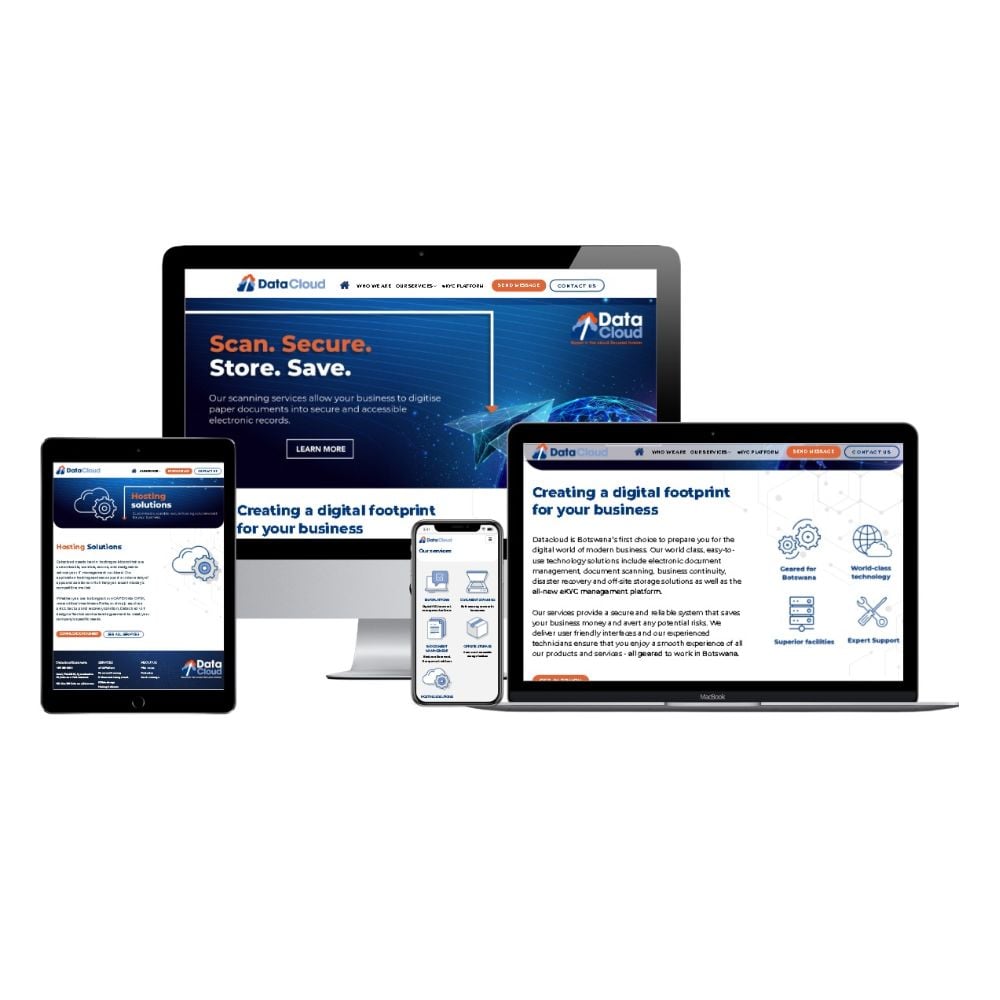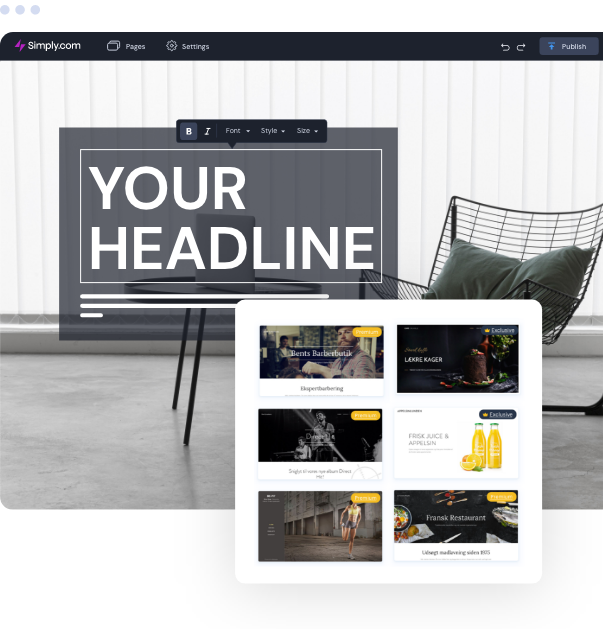The Effect of Receptive Functions on Your Website Design Success
Trick Techniques for Executing User-Centric Site Layout to Boost Involvement
When thinking about the execution of user-centric site layout, specific approaches contribute in enhancing involvement. Extensive study into user demands and preferences creates the structure, guiding the development of user personalities to educate layout options. Instinctive navigating and responsive interfaces are vital, making sure convenience of access across all gadgets. Individualizing content enhances user fulfillment, and durable access attributes expand reach. These methods jointly cultivate an even more purposeful online experience. Just how do these components come with each other efficiently, and what useful steps can be taken to ensure their effective integration?
Comprehending Customer Requirements
Understanding individual needs is a basic action in the procedure of user-centric website style. This method makes certain that the web site aligns with the assumptions and requirements of its target market, inevitably bring about enhanced customer fulfillment and engagement. The first stage entails conducting comprehensive research to collect understandings into individual habits, preferences, and discomfort points. Techniques such as surveys, meetings, and individual screening can offer useful qualitative and measurable data regarding exactly how users communicate with the web site.
Evaluating this information permits developers to create comprehensive individual personas that represent the different sections of the target market. These personalities aid inform layout decisions by highlighting certain customer objectives and difficulties, leading the growth of functions that address these demands efficiently. Furthermore, understanding the context in which individuals operate-- such as their atmosphere, gadget choices, and time restraints-- can further refine the style strategy.
Compassion plays an essential role in this process, allowing designers to see the site from the user's point of view. By prioritizing user demands, the layout process ends up being extra focused, avoiding the incorporation of unneeded aspects that could mess the user experience. Eventually, a deep understanding of user needs contributes in crafting a website that is both practical and significant.
Designing Instinctive Navigating
Having established a comprehensive understanding of individual requirements, the next action in user-centric site layout includes producing user-friendly navigating. Efficient navigation is basic to customer fulfillment, affecting exactly how conveniently users can locate details and complete jobs. To attain user-friendly navigation, designers must focus on simpleness and clearness, making certain that the navigation structure is sensible and constant throughout the website.
Organizing material into a clear pecking order is essential. Website Design. Using familiar tags and symbols can direct customers easily, minimizing cognitive lots and boosting the total customer experience. A well-designed navigation bar need to be prominently placed, allowing customers to recognize their current location and conveniently check out various other sections of the website
It is additionally important to integrate interactive aspects such as breadcrumbs and search performances to aid individuals in navigating complicated websites. These features supply extra paths and enhance the ease of access of material, catering to different customer choices and habits.
Testing navigation with actual customers is important to identify prospective pain factors and ensure capability straightens with individual assumptions. Normal comments loopholes and repetitive renovations can aid preserve an effective navigating system that adjusts to advancing individual needs, inevitably enhancing interaction and fulfillment.
Producing Responsive User Interfaces
Inevitably, developing receptive interfaces is a pivotal facet of contemporary website design, ensuring that web sites are easily accessible and practical across a multitude of tools and screen dimensions (Website Design). This adaptability is critical in a landscape where users accessibility content via mobile phones, laptops, tablets, and desktops, each with varying alignments and resolutions. The primary goal of responsive layout is to enhance individual experience by maintaining optimum readability and use, no matter the gadget made use of
To attain this, web designers employ versatile grid formats, liquid images, and CSS media queries. Adaptable grids permit website elements to resize proportionally, while liquid images guarantee visuals scale suitably without losing high quality. Media queries play an why not find out more important duty by using various designs based on the device's qualities, such as elevation, positioning, and size, hence customizing the format to the customer's display.
Furthermore, responsive interfaces add to enhanced search engine optimization (SEO) by supplying a seamless customer experience, which subsequently can minimize bounce rates and boost site interaction. In summary, taking on responsive layout is not simply a technical consideration but an essential approach for fostering a user-centric web atmosphere that meets the needs of a varied target market.

Customizing Material Experience
Individualizing content experience is a vital component of user-centric website design that entails tailoring content to meet the unique preferences and habits of private users. This approach not only boosts customer fulfillment yet likewise fosters deeper involvement, as site visitors are more probable to connect with web content that reverberates with their rate of interests and requirements. By leveraging data analytics and customer responses, businesses can recognize patterns and patterns that notify the modification of internet content.
Incorporating customization techniques can range from straightforward modifications, such as suggesting products based upon searching history, to extra innovative methods like vibrant material that adapts in real-time to a customer's interactions. Customized landing pages can dramatically enhance conversion prices by giving users with pertinent information and offers that straighten with their previous activities and preferences.
Moreover, using expert system and artificial intelligence can additionally refine content customization by continually picking up from individual browse around these guys habits and adjusting to emerging patterns. This not just enhances the user's journey yet additionally builds brand loyalty, as clients really feel recognized and valued. Ultimately, individualizing the content experience is an important method for businesses aiming to develop an extra meaningful and engaging interaction with their audience.
Enhancing Availability Features
Enhancing accessibility features is a fundamental aspect of user-centric website style, making sure that electronic content is usable by everybody, including individuals with disabilities. This method not only abides by legal requirements such as the Americans with Disabilities Act (ADA) and the Web Content Accessibility Standards (WCAG) yet also considerably widens a web site's audience reach. By integrating features like key-board navigating, screen visitor compatibility, and alternative text for photos, sites end up being a lot more comprehensive, offering a seamless experience for users with aesthetic, acoustic, or motor impairments.
Including receptive design elements is vital, facilitating accessibility on different devices and screen dimensions, thus accommodating users with different choices and requirements. Contrast ratios and message dimension adjustments can boost readability for people with visual difficulties. Providing succinct and clear content framework, such as listings and headings, help comprehension and navigation, especially for individuals with cognitive handicaps.
Normal accessibility audits need to be conducted to determine and correct prospective obstacles, ensuring ongoing conformity and functionality. By prioritizing access, companies not just foster inclusivity but also boost general individual involvement and fulfillment, ultimately driving higher conversion rates and strengthening brand commitment.

Verdict
Integrating user-centric layout methods dramatically enhances web site involvement by focusing on the needs and preferences of users. Detailed research helps with the creation of user characters, leading targeted design choices.
Comprehensive study into helpful resources customer demands and choices develops the structure, assisting the production of individual characters to educate style choices. Techniques such as surveys, interviews, and user testing can give beneficial qualitative and quantitative data about just how customers interact with the internet site.
By focusing on customer requirements, the design procedure comes to be a lot more concentrated, stopping the incorporation of unnecessary aspects that might mess the individual experience. Effective navigating is basic to individual contentment, affecting how quickly individuals can locate info and total tasks. The usage of familiar tags and symbols can direct users easily, reducing cognitive tons and boosting the total individual experience.